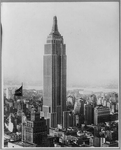Addendum on the Spire
A rare negative piece on the Chicago Spire today, from Peter Slatin. I'm a little surprised that he is against a project that has such excellent architecture just because he doesn't like that starchitects are now being used to sell condos. Isn't that the point, to get on the other side of the table so that developers want to use great architecture as a selling tool? I mean, you can't complain about Trump's "commercial" architecture one day and then complain about top-flight design the next -- you begin to be seen as anti-developer, period.
Slatin and others also don't like the location of the Spire, feeling that a slender needle-like structure on the edge of the downtown and taller than anything else would look "garish" and out of place. Ugliness would ensure. Hmmn, guess they've never been to Toronto.
Finally, now USA TODAY has commented that America is overcoming its fear of terrorism as it relates to tall buildings, and that "skyscrapers remain symbols of American achievement and striving." Sure, if that's "striving" circa 1983. Take off the blinders, USA TODAY, and read my post from yesterday regarding where America stands in the supertall status charts. You're not coming back. And by the way, can you even spell "Calatrava"? That's a four-syllable word, you know.
Slatin and others also don't like the location of the Spire, feeling that a slender needle-like structure on the edge of the downtown and taller than anything else would look "garish" and out of place. Ugliness would ensure. Hmmn, guess they've never been to Toronto.
Finally, now USA TODAY has commented that America is overcoming its fear of terrorism as it relates to tall buildings, and that "skyscrapers remain symbols of American achievement and striving." Sure, if that's "striving" circa 1983. Take off the blinders, USA TODAY, and read my post from yesterday regarding where America stands in the supertall status charts. You're not coming back. And by the way, can you even spell "Calatrava"? That's a four-syllable word, you know.





